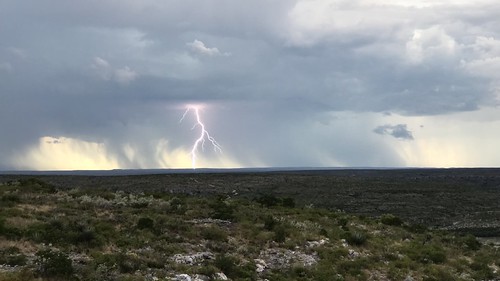or figure 2: 2007). Similar effects can be seen GW 501516 web following deletion of Reverba exons with respect to Rev-erbb de-repression. Reduction of targeted Rev-erb exonic mRNA averaged 90% for Rev-erba and 80% for Rev-erbb. Activation of TLR3 with a synthetic double-stranded RNA analog, polyinosinic-polycytidylic acid, TLR4 with Kdo2-lipid A, TLR1/2 with a synthetic triacylated lipopeptide, Pam3CSK4, and co-activation with KLA and IFNg induced characteristic pro-inflammatory gene signatures in WT macrophages. In contrast, IL4 or TGFb stimulation of macrophages resulted in the expected alternatively activated and de-activated gene profiles, respectively. Comparing the gene expression signature from WT and Rev-erb DKO macrophages, for the majority of genes, the magnitude of differential expression between WT and Rev-erb DKO macrophages varied depending on the polarization state, in some cases only being observed under basal conditions, and in other cases only observed in response to a particular stimulus. These results suggest that the magnitude of differential expression in WT compared to Rev-erb DKO macrophages is highly dependent on polarization state. Rev-erb deficient animals display enhanced wound healing Gene ontology analysis of mRNAs exhibiting differential expression in at least one of the single polarizing conditions revealed significant enrichment for genes involved in the response to wounding. Notably, genetic loss of Cx3cr1 and Arg1 has been shown to hinder efficient wound healing in mice, suggesting that mice lacking Rev-erbs in cells of hematopoietic origin might exhibit more rapid wound healing. To test this hypothesis, we utilized a full thickness wound healing model in mice after bone  marrow reconstitution with either WT or Rev-erb DKO bone marrow. Bone marrow reconstitution efficiency exceeded 94%. We found from three independent experiments that Rev-erb deficiency in bone marrow derived hematopoietic cells resulted in accelerated wound closure. This was especially apparent on days 26 post-injury, consistent with Rev-erb deficiency resulting in a faster response during the immune phase of wound healing. Wounds from the Rev-erb DKO chimeric mice displayed greater immune cell infiltration and faster wound healing progression, characterized by enhanced re-epithelialization and increased granulation tissue development, characteristics correlated with an accelerated immune response during wound healing. In addition, Rev-erb DKO bone marrow transplanted mice displayed more macrophages at the wound site on day 4 post-injury, while neutrophil persistence at the wound site remained similar between WT and Rev-erb DKO transplanted mice. Moreover, matrigel migration assays show increased extravasation of Rev-erb DKO macrophages when compared to their WT counterparts. To devise an in vitro model of the acute in vivo response to wounding, we prepared a supernatant from homogenized skin. This tissue homogenate provides a complex signal derived from components of PubMed ID:http://www.ncbi.nlm.nih.gov/pubmed/19825521 disrupted cells, the skin microbiome, and factors residing in the extracellular matrix. Tissue homogenate was used to stimulate WT and Rev-erb DKO macrophages for 6 and 24 hr, followed by RNA-Seq analysis. The gene expression signature of tissue homogenate-stimulated macrophages showed both similarities and differences when compared to the responses observed after treatment with TLR agonists, IL4, or TGFb. In parallel, we performed temporal transcriptomic analysis of biopsied wounds d
marrow reconstitution with either WT or Rev-erb DKO bone marrow. Bone marrow reconstitution efficiency exceeded 94%. We found from three independent experiments that Rev-erb deficiency in bone marrow derived hematopoietic cells resulted in accelerated wound closure. This was especially apparent on days 26 post-injury, consistent with Rev-erb deficiency resulting in a faster response during the immune phase of wound healing. Wounds from the Rev-erb DKO chimeric mice displayed greater immune cell infiltration and faster wound healing progression, characterized by enhanced re-epithelialization and increased granulation tissue development, characteristics correlated with an accelerated immune response during wound healing. In addition, Rev-erb DKO bone marrow transplanted mice displayed more macrophages at the wound site on day 4 post-injury, while neutrophil persistence at the wound site remained similar between WT and Rev-erb DKO transplanted mice. Moreover, matrigel migration assays show increased extravasation of Rev-erb DKO macrophages when compared to their WT counterparts. To devise an in vitro model of the acute in vivo response to wounding, we prepared a supernatant from homogenized skin. This tissue homogenate provides a complex signal derived from components of PubMed ID:http://www.ncbi.nlm.nih.gov/pubmed/19825521 disrupted cells, the skin microbiome, and factors residing in the extracellular matrix. Tissue homogenate was used to stimulate WT and Rev-erb DKO macrophages for 6 and 24 hr, followed by RNA-Seq analysis. The gene expression signature of tissue homogenate-stimulated macrophages showed both similarities and differences when compared to the responses observed after treatment with TLR agonists, IL4, or TGFb. In parallel, we performed temporal transcriptomic analysis of biopsied wounds d
Interleukin Related interleukin-related.com
Just another WordPress site
